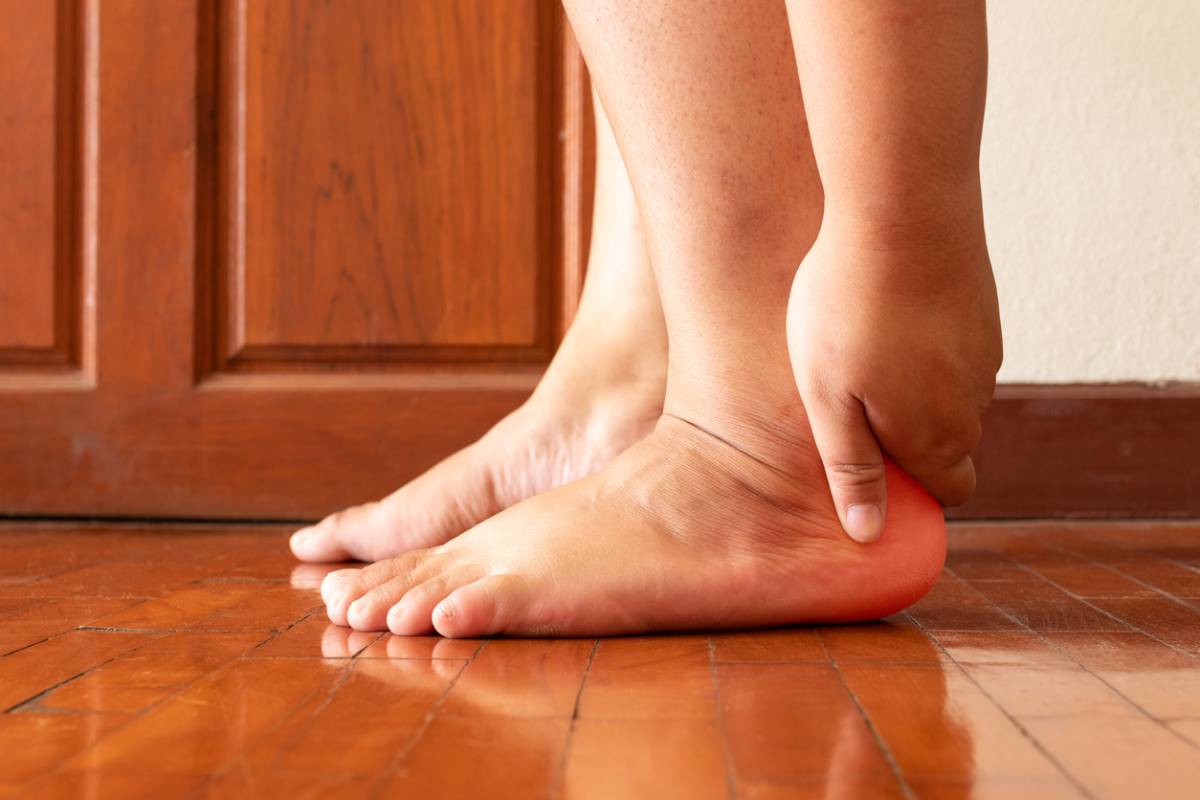Heel spurs are a common foot condition that can cause discomfort and pain, impacting daily activities. Those with the condition often wonder, “Why do heel spurs develop?” These bony growths on the underside of the heel bone develop over time and are often linked to underlying issues with foot mechanics or chronic stress on the feet. Fortunately, minimally invasive heel pain treatment options are available to treat them. Understanding why heel spurs form can give you the upper hand in preventing them.
What Are Heel Spurs?
Heel spurs are calcium deposits that form a bony protrusion on the underside of the heel bone, also known as the calcaneus. They may measure up to half an inch in length, but they often go unnoticed unless they cause pain or are visible on X-rays. Heel spurs can develop independently or in conjunction with other foot conditions, such as plantar fasciitis.
Symptoms of Heel Spurs
- Pain or Discomfort: Especially during walking, running, or standing for extended periods.
- Inflammation: Swelling in the heel area may accompany the pain.
- Tenderness: The underside of the heel may feel sensitive to touch.
Not all heel spurs cause pain. Many people have heel spurs without any noticeable symptoms.
Why Do Heel Spurs Develop?
Heel spurs develop as a result of calcium deposits forming over time. Calcium deposits can form due to repetitive strain and stress on the foot. Several factors contribute to their formation:
1. Repetitive Stress and Overuse
Repeated strain on the heel bone and the surrounding tissues can lead to heel spurs. Activities that involve frequent running, jumping, or prolonged standing place stress on the heel and the plantar fascia, which can increase the likelihood of developing these bony outgrowths.
2. Plantar Fasciitis
Heel spurs often develop in conjunction with plantar fasciitis, a condition characterized by inflammation of the plantar fascia—a thick band of tissue connecting the heel to the toes. Over time, the tension and inflammation in the plantar fascia can result in calcium deposits forming on the heel bone.
3. Poor Foot Mechanics
Abnormal foot mechanics, such as flat feet or high arches, can alter the distribution of weight and pressure on the feet. Uneven pressure can lead to excessive stress on the heel, contributing to the development of heel spurs.
4. Inappropriate Footwear
Wearing poorly fitted or unsupportive shoes can exacerbate stress on the heel. High heels, shoes with inadequate arch support, or worn-out soles fail to provide proper cushioning. The strain on the plantar fascia and heel bone can increase.
5. Age and Wear-and-Tear
As people age, the natural wear-and-tear on their feet can make them more susceptible to heel spurs. The heel fat pad may thin over time, providing less cushioning and increasing the risk of stress-related calcium deposits.
6. Obesity and Excess Weight
Excess body weight places additional pressure on the feet, particularly the heels. Over time, this increased strain can lead to the formation of heel spurs. Maintaining a healthy weight is crucial for reducing stress on the feet and preventing related issues.
7. Certain Medical Conditions
Medical conditions such as arthritis, diabetes, and gout can contribute to heel spurs. These conditions may affect foot mechanics, cause inflammation, or lead to changes in bone structure. All can increase the likelihood of developing heel spurs.
Prevention of Heel Spurs
Taking proactive steps can reduce the risk of developing heel spurs:
1. Wear Supportive Footwear
Invest in well-cushioned shoes with good arch support. Orthotic inserts or custom insoles can provide additional support and distribute pressure evenly across the foot.
2. Maintain a Healthy Weight
Keeping your body weight within a healthy range reduces the pressure on your feet and minimizes the risk of stress-related conditions like heel spurs.
3. Stretch and Strengthen Your Feet
Regular stretching exercises for the plantar fascia, Achilles tendon, and calf muscles can improve flexibility and reduce tension on the heel.
4. Avoid Overuse
Limit activities that place excessive stress on your feet. Gradually increase the intensity of physical activity to avoid sudden strain.
5. Use Proper Techniques
Engage in activities like running and walking with proper form and technique. Working with a physical therapist or coach can help ensure correct biomechanics.
Heel Spur Treatment
Heel spurs develop due to repetitive stress, poor foot mechanics, and other contributing factors like plantar fasciitis and excess weight. Understanding the underlying causes and practicing preventive measures, such as wearing supportive footwear and maintaining a healthy weight, can reduce the risk of developing heel spurs. Luckily, options for heel pain treatment certainly exist. Consult a healthcare professional sooner rather than later to ensure effective management and long-term foot health.
